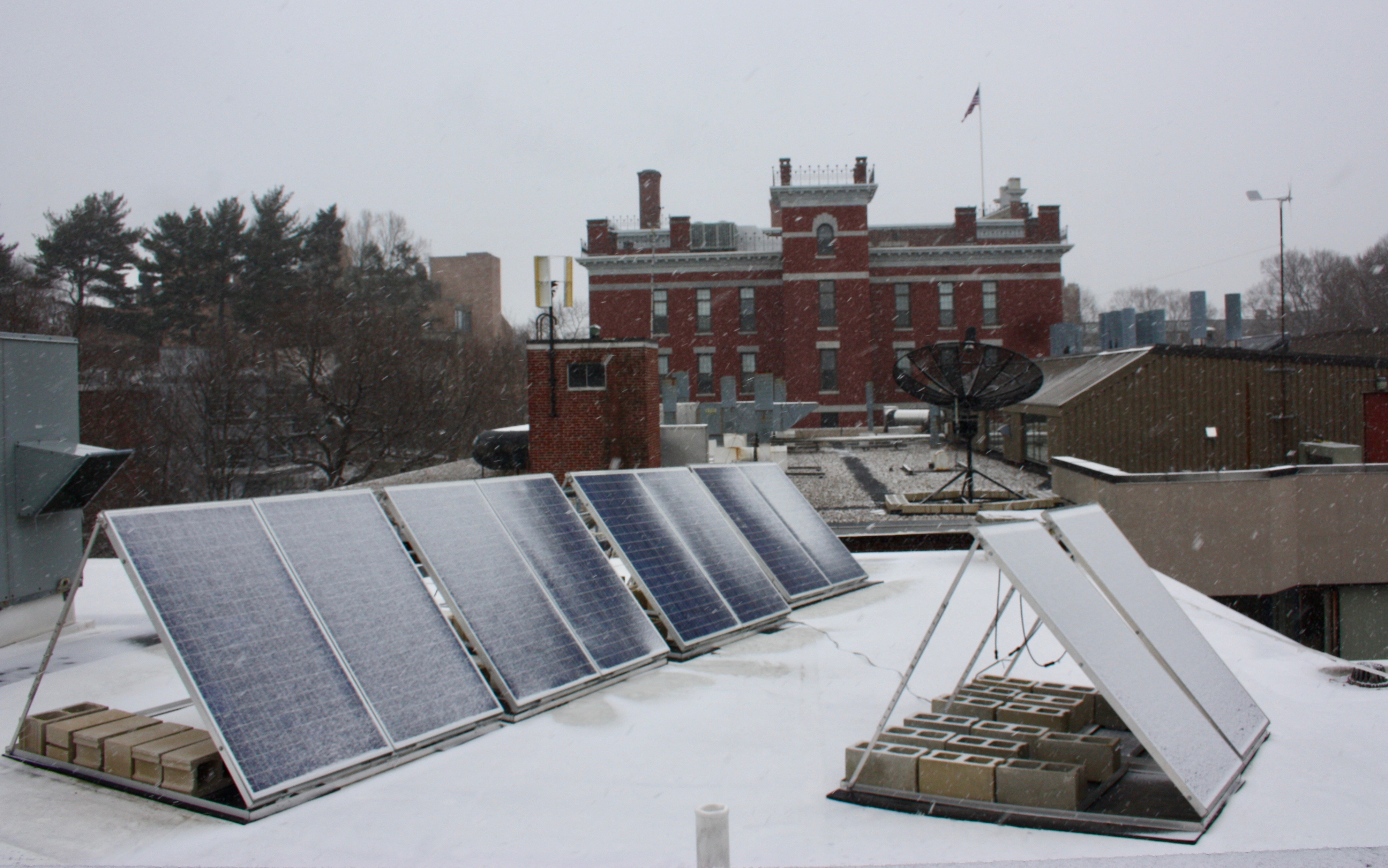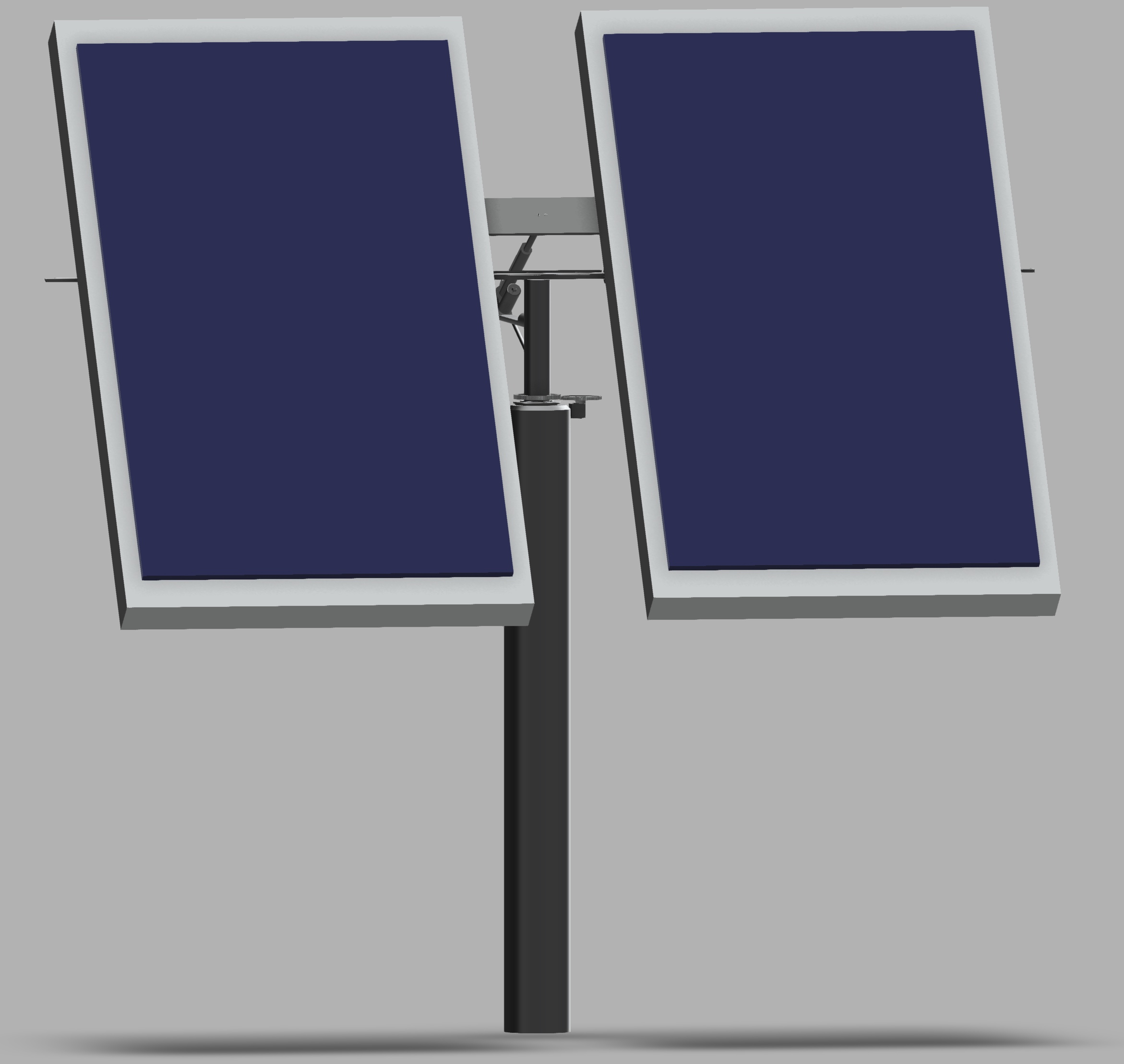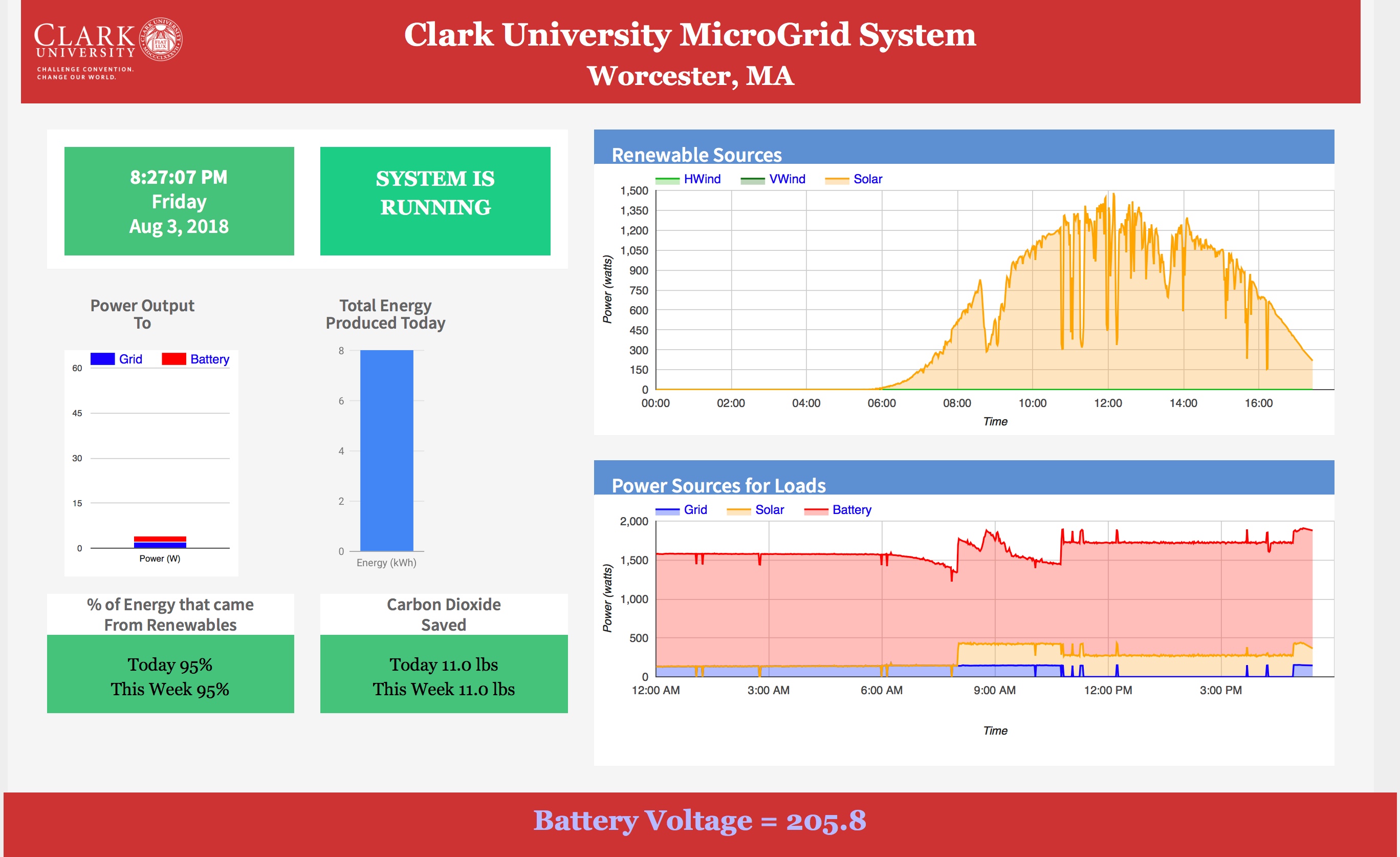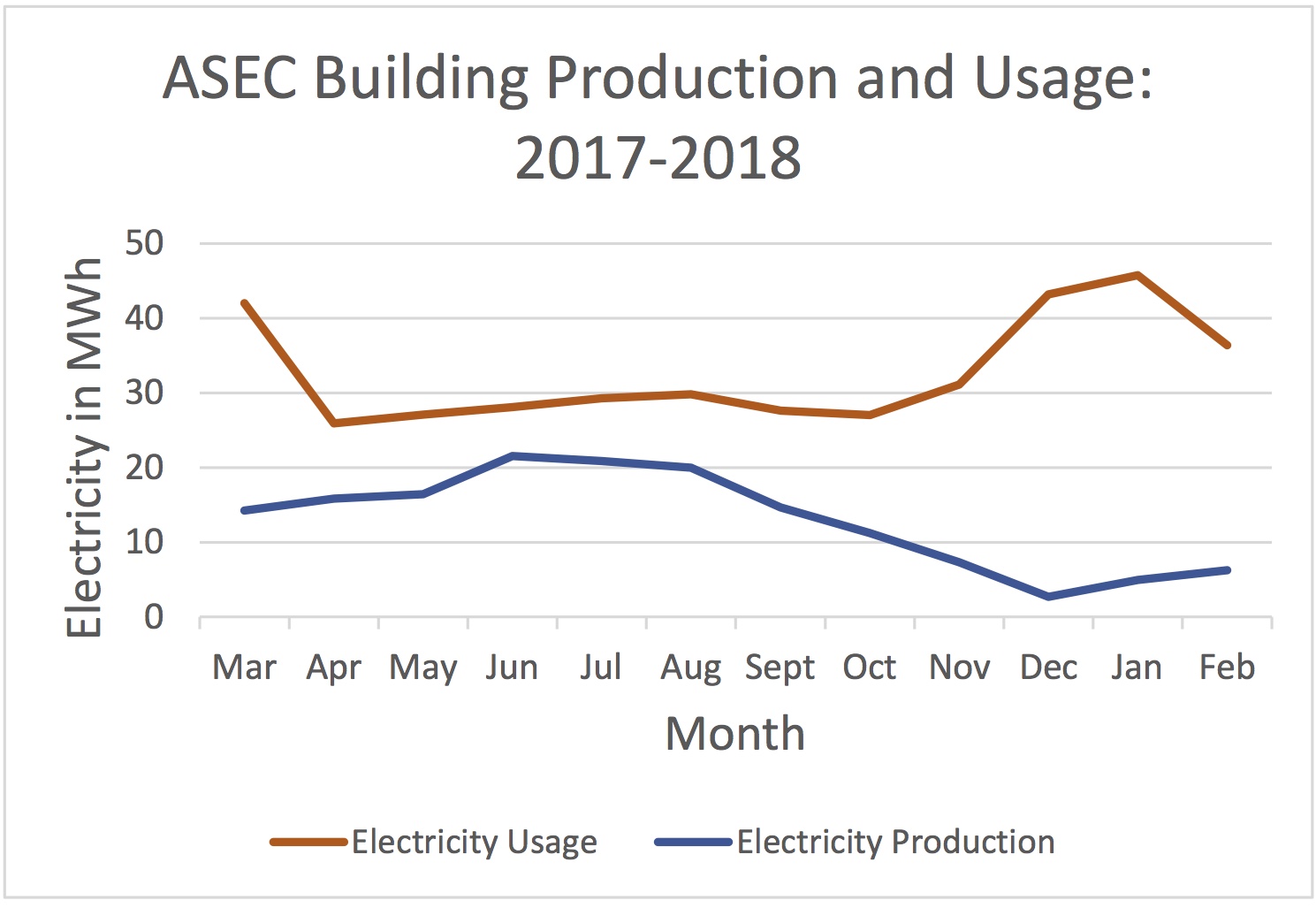Renewable Energy and DC Power. Are They Better Together?
Chuck Agosta - Clark University
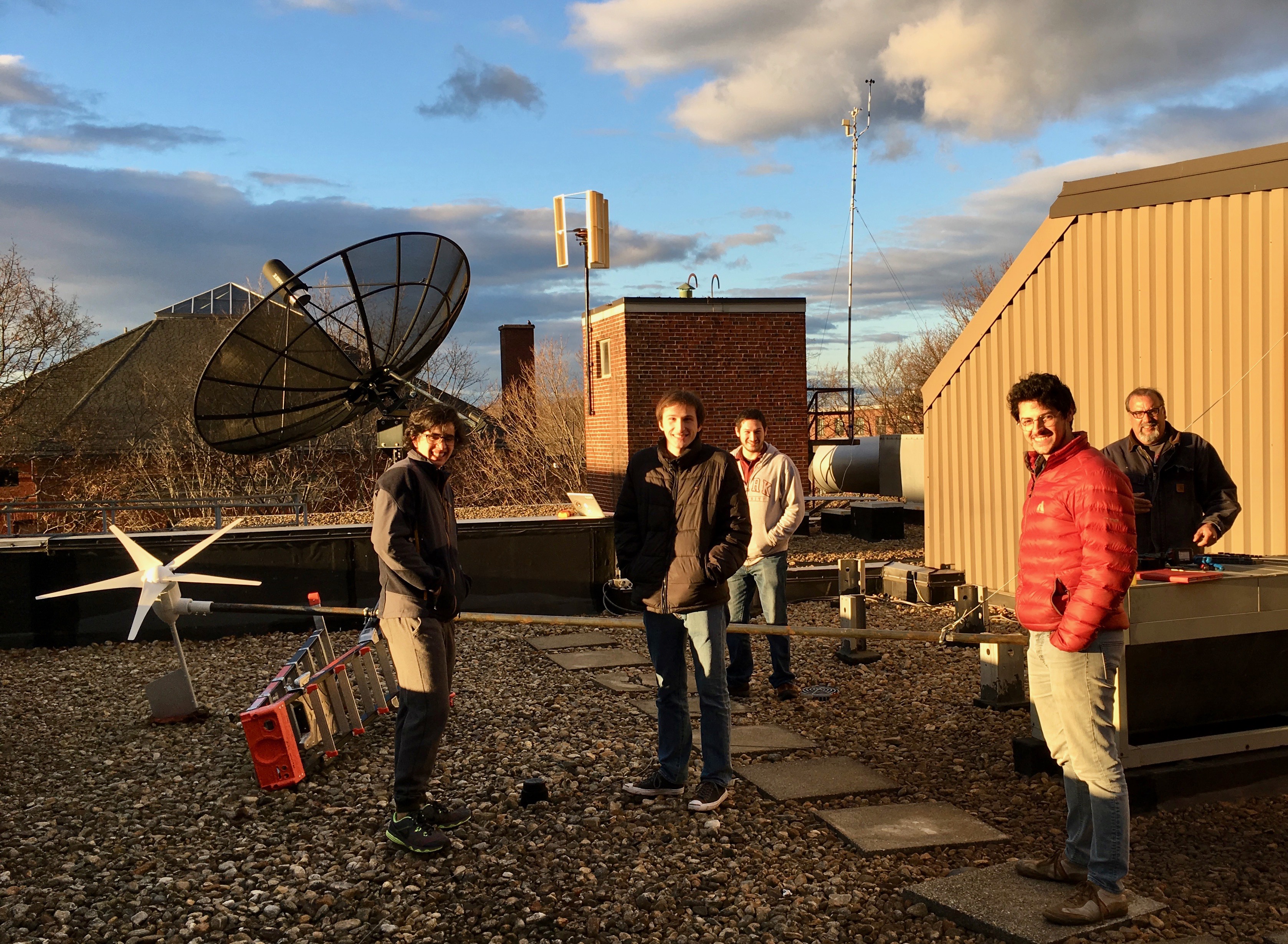
The renewable energy laboratory supports many projects, some as part of the "Technology of Renewable Energy" class and others as independent undergraduate or graduate student projects. Examples are the main nanogrid, an independent USB charging station for the Clark bistro, a tracking solarpanel mount, web enabled database management of the renewable energy system, energy analysis of Clark's new ASEC building and more.
The Nanogrid
There are two broad goals for the nanogrid system. One is to ake the system as efficient as possible and see if there are efficiency gains due to using only dc electricity. A second goal is to learn how to optimize the system for different operational metrics. A renewable energy nanogrid can increase resiliency and load shift peak power by taking advantage of the batteries. Making the system as autonomous as possible can lower the carbon footprint of the building, and opportunistic charging and discharging of the batteries can lower energy costs. Taking advantage of many of these attributes is called stacking, although it is not clear that all of these metrics can be a priority simultaneously. Learning how to manage the nanogrid and optimize these metrics is an important goal of this project.
The design of the nanogrid can be found here. It is based on products from Pika Energy, a company dedicated to using a standard high voltage (~400 V) dc power bus to connect all of its renewable energy devices, including controllers for photovoltaics, wind turbines, batteries and for bidirectional grid tie-in.
A live webpage to see the status of the nanogrid shows a small fraction of the data that is collected for analysis. In a collaboration with the computer science department a group of students have also made a web based data browser and a machine learning engine that predicts the available solar energy for te next day based on NOAA cloud cover forecasts and previous data.
The design of the nanogrid can be found here. It is based on products from Pika Energy, a company dedicated to using a standard high voltage (~400 V) dc power bus to connect all of its renewable energy devices, including controllers for photovoltaics, wind turbines, batteries and for bidirectional grid tie-in. A live webpage to see the status of the nanogrid shows a small fraction of the data that is collected for analysis. In a collaboration with the computer science department a group of students have also made a web based data browser and a machine learning engine that predicts the available solar energy for te next day based on NOAA cloud cover forecasts and previous data.

